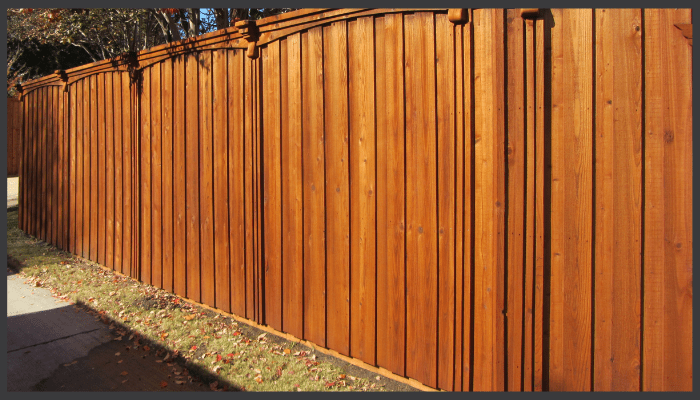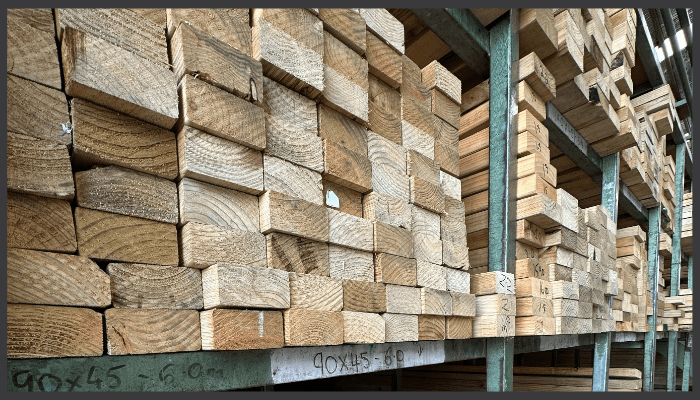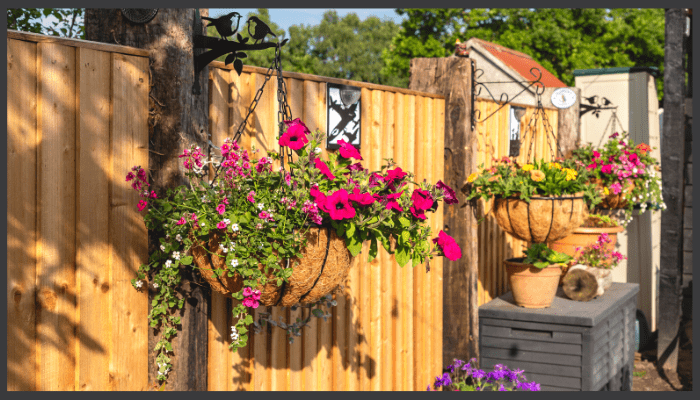How to Stain and Maintain Hardwood Fence Palings
Table of Contents:
- Why Staining Hardwood Fence Palings Is Important
- Where to Buy the Right Products and Materials
- Final Thoughts
- Frequently Asked Questions
Have you just installed hardwood fence palings around your property?
Are you sketching plans for your next backyard overhaul?
Learning how to properly stain and maintain them is essential.
Think of a good stain as SPF 50 for timber.
It keeps your wooden warriors looking sharp and extends their lifespan against the elements.
This reduces maintenance drama and ensures they meet Australian standards.
In this guide, we'll walk you through the steps to prepare, stain, and maintain your hardwood palings for a long and happy life.
We'll help you navigate the overwhelming world of wood care products.
Better yet, we'll explain the benefits of each option without the sales pitch jargon.
You'll finally have an answer to those burning questions that keep fence owners up at night.
Why Staining Hardwood Fence Palings Is Important
Hardwood fencing is a long-term investment in privacy, security, and kerb appeal. But even these wooden commandos need protection from their three greatest enemies:
-
moisture (the silent infiltrator),
-
UV rays (the relentless aerial assault),
-
and pests (the ground troops).
Proper staining and maintenance can serve as a first line of defense, but for comprehensive protection from termites, it's essential to implement additional measures.
Staining your hardwood palings will:
-
Create an invisible shield against moisture.
-
Establish a UV-blocking force field that prevents your fence from ageing fast.
-
Preserve the natural colour and grain so your fence matches your landscaping vision.
-
Create a uniform finish.
-
Reduce future repair bills and weekend maintenance.
Step 1: Check the Suitability of Your Fence for Staining
Before staining, conduct a thorough inspection.
Finding damaged palings after you’ve started staining is both disappointing and time-consuming.
Replace any cracked or loose palings and give them all a proper cleaning to remove dirt, flaking paint, or old stains.
Consider this the exfoliation phase of your fence spa day - it's a spotless surface that helps the new coating bond rather than sliding off.
Unsure whether your fence is ready for its protective armour?
Contact the timber experts at Pinus Sawmills for advice on timber grades and the best treatment strategies for your particular palings.
Step 2: Choose the Right Stain and Tools
Now it's time to choose your fence's battle armour, and there are many options!
Select one that meets Australian standards and suits our climate conditions and pairs well with your hardwood landscaping supplies - especially if you’re working with decorative fencing elements or garden features:
-
Transparent stains: The "natural look" approach shows off your fence's grain.
-
Semi-transparent stains: The perfect balance of colour and character.
-
Solid stains: The "total makeover" choice hides imperfections.
For application, you'll need a brush, roller, or sprayer.
For precision, brushes are recommended, especially when navigating any architecturally challenging fence features.
A high-quality brush gives the best control around posts, caps, and decorative trim.
Step 3: Stain Your Hardwood Fence Palings
Start your staining mission from one strategic end and work your way methodically across, following the natural wood grain.
Apply the stain with the even precision. Work one board at a time for consistent coverage.
You may need a second coat for better protection.
This depends on how thirsty your fence is and what the manufacturer suggests.
Keep the operation zone clear until the stain fully dries. That’s approximately 24-48 hours, depending on the weather.
Step 4: Maintain Your Fence for Long-Term Results
Staining is merely the first step. To ensure your hardwood border patrol stays in fighting shape, follow this maintenance strategy:
-
Conduct annual fence maintence on wear and tear.
-
Apply fresh stain reinforcements every 2–3 years with timber preservatives and oils.
-
Give your fence a gentle spa day with mild soap and water every few months.
-
Establish zone between plants and the fence to prevent moisture.
This maintenance schedule is like flossing.
It's not exciting, but it's much better than the alternative of expensive reconstructive work later.
Regular light care prevents heavy-duty fixes down the track.
Follow these timber maintenance recommendations to help your fence stay in top condition.
Where to Buy the Right Products and Materials
Ready to equip your fence protection force?
Visit Pinus Sawmills in Canberra or browse our online catalogue- your fence supply headquarters.
We offer premium hardwood palings, staining produts, and all of the gear needed for a professional-grade work.
Our website allows you to check stock too.
You can read reviews from previous customers, and arrange delivery to your location.
Questions about quantities or delivery timeframes keeping you up at night? Our support team stands ready to assist!
Final Thoughts
When you invest in hardwood fence palings, you're not just building a boundary - you're establishing a perimeter system.
By staining and caring for your hardwood fence palings, you ensure they stay strong for decades.
Whether you’re starting a new landscaping project or fixing old fence sections, keep this in mind: proper staining and regular maintenance are key.
They can turn “just okay” into “Wow, nice fence!” and help your structure withstand the elements for years to come.
Frequently Asked Questions
How much stain do I need for my hardwood fencing?
It depends on your fence's dimensions and the stain type. Most products list coverage areas on the label. Always buy a little extra for touch-ups.
Can I use any stain on hardwood palings?
Technically yes, but the results might make you cry. Choose one specifically rated for hardwood and compliant with Australian standards to avoid a fence fashion faux pas.
Do I need to sand the palings before staining?
Yes. Sanding opens up the wood's pores like a good exfoliation at a spa. It allows the stain to penetrate deeply rather than sitting awkwardly on the surface. It also creates that "I definitely hired professionals" finish.
Can I stain palings that have already been treated?
Yes, but proceed with the caution. Some treatments need time to settle in. Review the treatment label or ask your supplier for advice.
What's the best time of year to stain a fence?
Spring and autumn - it’s not too hot, nor too cold, and just right for even drying. Avoid staining in direct midday sun, or before the rain.
How do I store leftover stain or materials?
Seal them tightly and keep in a cool, dry place. Label clearly for both safe handling and so you don't forget what's in the container!
Where can I access expert advice or get help choosing stain?
Visit your local supplier or contact Pinus Sawmills. We can guide you through product selection, delivery options, and best practices.



